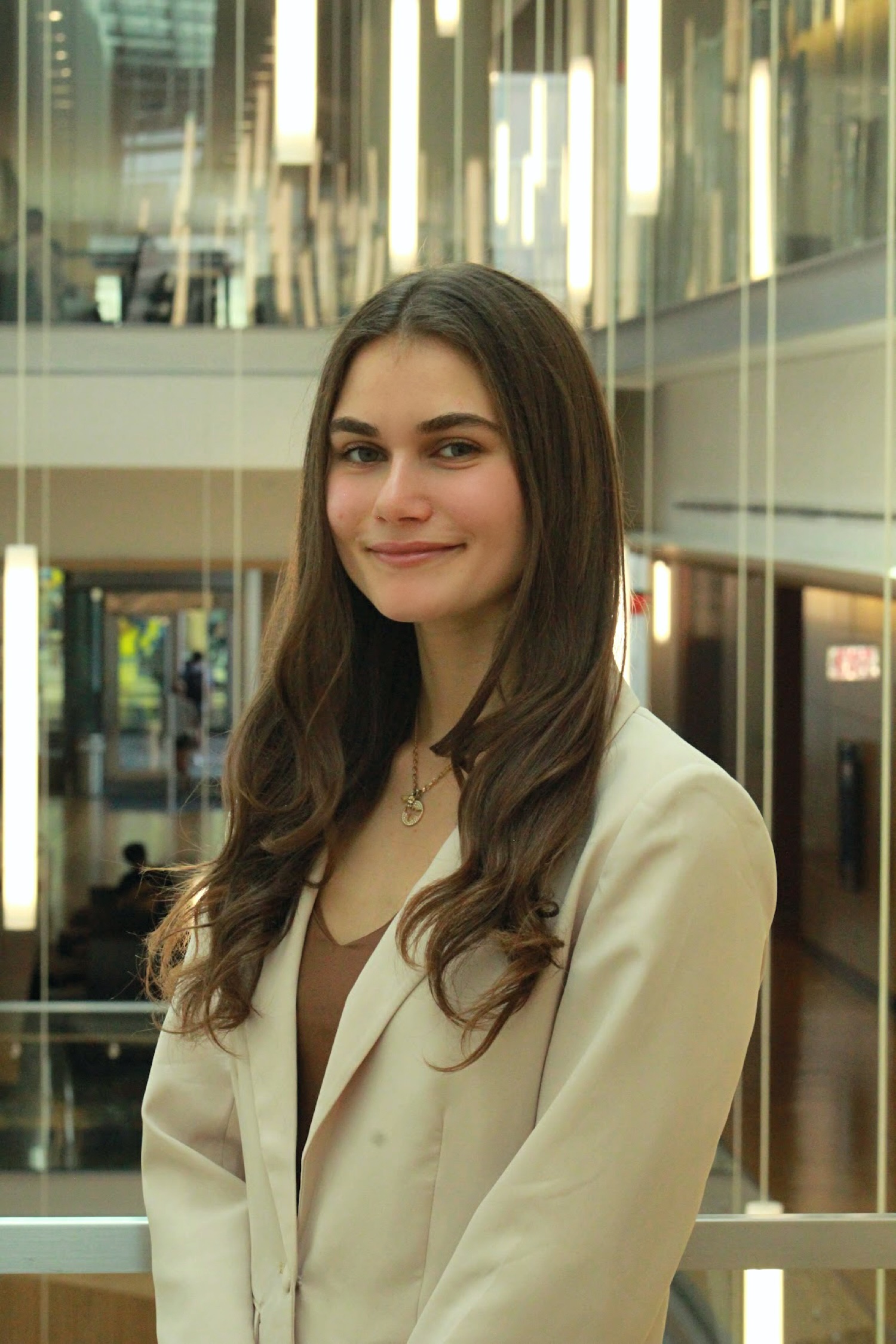Tissue Engineering
Cultured Ovarian Stromal Fibroblasts And Endothelial Cells For Artificial Ovary Applications
(K-422) Cultured Ovarian Stromal Fibroblasts And Endothelial Cells For Artificial Ovary Applications

Natalie Hanby (she/her/hers)
Biomedical Engineering Undergraduate Student
University of Michigan
Rochester, Michigan, United States- MW
Monica Wall
PhD Candidate
University of Michigan, United States - AS
Ariella Shikanov
Associate Professor
University of Michigan, United States
Presenting Author(s)
Last Author(s)
Primary Investigator(s)
Cancer treatments such as chemotherapy and radiation cause severe damage to the ovaries, leaving prepubertal patients lacking ovarian endocrine function and infertile. The only available option for these cancer patients is autotransplantation of cryopreserved autologous tissue, which carries risks such as transplanting malignant cells, unknown follicle count, and non-tunable cellular conditions. We propose to construct an artificial ovary made with isolated ovarian follicles and stroma cells, encapsulated in a biomimetic hydrogel. This will create an engineered environment with a reliable follicle population and the cellular components necessary for follicle development. The research presented here focuses on ovarian stroma cells. The ovarian stroma can be defined as any non-follicle component that makes up the ovary, which consists of a variety of cell types [1]. In specific, we investigated the presence of stromal fibroblasts and endothelial cells (ECs) due to their imperative role in follicle development. Fibroblasts synthesize components of the extracellular matrix (ECM) and maintain structural integrity of connective tissue [2], while ECs are required for the formation of new vasculature within transplanted tissues [3]. With an overarching goal of restoring endocrine and reproductive function using autographs, this work aims to determine culture conditions for expansion and further characterization of the stroma population in human ovarian tissue.
Materials and Methods::
We compared the effect of two growth medias on total yield of fibroblasts and ECs from in vitro culture of cryopreserved ovarian stroma. Human ovarian tissue was obtained from deceased donors through the International Institute for the Advancement of Medicine (IIAM) and cryopreserved according to current clinical guidelines. Thawed human ovarian cortex tissue from 3 donors was chopped into 750 X 750 X 1000µm cubes. Chopped tissue was then enzymatically digested in 0.5 mg/mL collagenase IA and 0.01 mg/mL DNAse for 1 hour. The resulting single cells were seeded at a density of 0.3 X 106 cells/mm2 (P0), and cultured in either a fibroblast specific media (Condition 1) consisting of DMEM, F12 1:1, 20% FBS, 1% L-glutamine, 1% Pen Strep or an EC specific media (Condition 2) consisting of EBM-2MV (Lonza) at 37°C, 5% CO2 for 6 days (~80% confluency). Cells were then passaged onto lysine coated coverslips at a density of 0.1 X 106 cells/mm2 (P1), and cultured in their respective media until reaching ~80% confluency [4]. Subsequently, cells were fixed and stained for the presence of collagen I or Von Willebrand factor (VWF) to investigate the presence of fibroblasts and ECs respectively.
Results, Conclusions, and Discussions::
At P0 - Day 6, the fibroblast specific media promoted a dense cell population, in which a network of sheet and spindle-like cells reached nearly 100% confluency. Here, it was difficult to differentiate one cell from the next. Conversely, the EC specific media promoted a spread out population of cells, with lower cell density and larger, more distinct cells. In this culture, individual cells were defined with clear and round nuclei. Unfortunately, after passing the cultures onto lysine coated coverslips, the cells in both conditions altered in morphology and density, becoming balled up and sparse. While some cells in Condition 1 regain their spindle structure, the cells in Condition 2 remain spherical all 6 days of P1. Immunofluorescent images showed positive staining for both antibodies of interest across the two media conditions. Starting with collagen I, red staining was presented within the central, cytoplasmic region of the cells, surrounding the nuclei and encapsulated by the cytoskeleton. For VWF, red staining was presented on the cell surface, outlining the cytoskeleton, as well as speckled throughout the images non-specifically. All present cells displayed positive staining for VWF. This raises concern for the concentration of the secondary antibody since not all cells are expected to be ECs across both media conditions.
Through culturing and staining, we can better understand the cell populations that make up the ovarian stroma. While prior research has noted the existence of fibroblasts and ECs in stroma, culturing the cells from frozen donor tissue opens the doors for many opportunities in a clinical setting and in development of an artificial ovary. This research proves the presence and ability to successfully culture the cell types that are critical for sustainable follicle development. Future endeavors include perfecting culture and staining conditions by switching from lysine to gelatin coated coverslips, and reducing VWF secondary antibody concentration. From here, we can continue to grow, isolate, and add ovarian fibroblast and ECs to a semi-degradable PEG hydrogel artificial ovary, providing an avenue to restore endocrine and reproductive function for the targeted population.
Acknowledgements (Optional): :
References (Optional): :
[1] Kinnear HM, Tomaszewski CE, Chang FL, Moravek MB, Xu M, Padmanabhan V, Shikanov A. The ovarian stroma as a new frontier. Reproduction. 2020 Sep;160(3):R25-R39. doi: 10.1530/REP-19-0501. PMID: 32716007; PMCID: PMC7453977.
[2] Sciencell Research Laboratories. Sciencell Research Laboratories, inc. (n.d.). Retrieved September 14, 2022, from https://www.sciencellonline.com/human-ovarian-fibroblasts.html
[3] C. Dath and others, Endothelial cells are essential for ovarian stromal tissue restructuring after xenotransplantation of isolated ovarian stromal cells, Human Reproduction, Volume 26, Issue 6, 1 June 2011, Pages 1431–1439. https://doi.org/10.1093/humrep/der073
[4] Some, S., Ho, S.-M., Dua, P., Hwang, E., Shin, Y. H., Yoo, H., Kang, J.-S., Lee, D., & Lee, H. (2012). Dual functions of highly potent graphene derivative–poly-< scp >l< /scp >-lysine composites to inhibit bacteria and support human cells. ACS Nano, 6(8), 7151–7161. https://doi.org/10.1021/nn302215y
